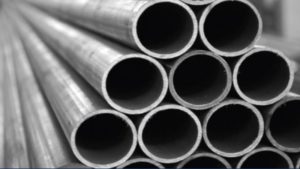
Stainless steel is an incredibly versatile and durable material that is commonly used in a wide range of applications, from kitchen appliances to medical equipment. Two of the most popular types of stainless steel are 304 and 316, but what are the differences between these two alloys, and how do you choose which one is right for your needs?
What is Stainless Steel?
Stainless steel is an alloy of iron, carbon, and at least 10% chromium. The addition of chromium creates a protective layer on the surface of the steel that prevents rust and corrosion. This makes stainless steel an excellent choice for applications where durability and resistance to corrosion are important.
What is 304 Stainless Steel?
304 stainless steel is one of the most common types of stainless steel. It is made up of at least 18% chromium and 8% nickel, which makes it highly resistant to corrosion and rust. It is also non-magnetic, which makes it an ideal choice for applications where magnetic properties are not desired.
What is 316 Stainless Steel?
316 stainless steel is an alloy that contains molybdenum, which increases its resistance to corrosion and pitting. It is also more resistant to saltwater and other acidic environments than 304 stainless steel, making it an ideal choice for marine and coastal applications.
Choosing the Right Stainless Steel
When choosing between 304 and 316 stainless steel, there are a few key factors to consider. The first is the intended use of the material. If you need a material that is highly resistant to corrosion and can withstand harsh environments, such as marine applications or outdoor construction, then 316 stainless steel may be the better choice.
On the other hand, if you need a material that is more affordable and has good corrosion resistance but will not be exposed to harsh environments, then 304 stainless steel may be the better option. It is also worth noting that 304 stainless steel is more commonly available and is often the more affordable choice.
Another factor to consider is the specific application of the stainless steel. For example, if you are using the material for a food-grade application, then 304 stainless steel is the safer choice, as it is the only type of stainless steel that is considered safe for use with food.
Ultimately, the decision between 304 and 316 stainless steel will depend on your specific needs and the intended use of the material. Both alloys are highly durable and resistant to corrosion, but 316 stainless steel is better suited to harsh environments and applications where high levels of corrosion resistance are required.
 Stainless steel is an incredibly versatile and durable material that is commonly used in a wide range of applications, from kitchen appliances to medical equipment. Two of the most popular types of stainless steel are 304 and 316, but what are the differences between these two alloys, and how do you choose which one is right for your needs?
Stainless steel is an incredibly versatile and durable material that is commonly used in a wide range of applications, from kitchen appliances to medical equipment. Two of the most popular types of stainless steel are 304 and 316, but what are the differences between these two alloys, and how do you choose which one is right for your needs?


